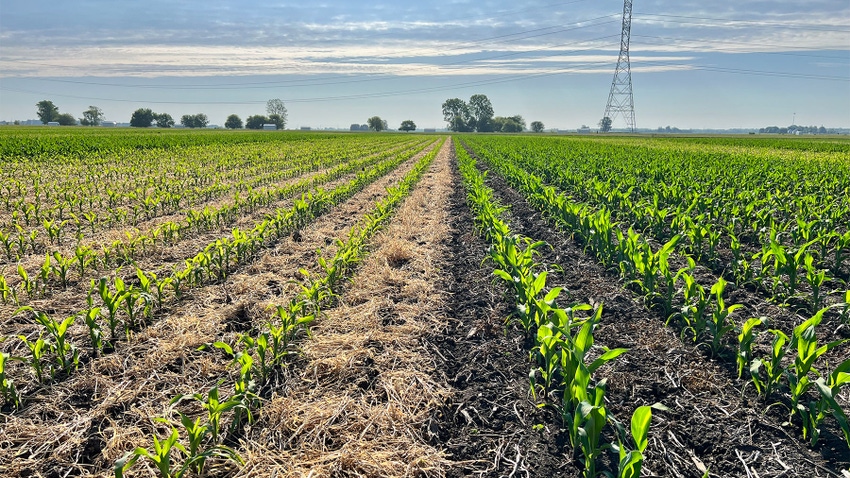November 28, 2023

by Dan Quinn
Managing a high-yielding corn crop following a cereal rye cover crop can be challenging. Cereal rye hosts a large array of benefits as a cover crop and is often the easiest to get established across a wide range of conditions. However, corn can struggle following cereal rye if not managed properly. In Purdue research trials that span Indiana, ongoing over multiple years, yield reductions in corn following a fall-drilled rye cover crop ranged from 10 to 30 bushels per acre.
One of the biggest challenges for corn following cereal rye is nitrogen availability. Cereal rye produces considerable carbon and takes up a significant amount of nitrogen from the soil. It doesn’t release that nitrogen in a timely manner, even when terminated multiple weeks before planting. This may be good environmentally, but herein lies the challenge for corn and risk of yield reductions.
Field testing
One of the best ways to combat nitrogen availability challenges and limit yield reductions following cereal rye is by using starter fertilizer and managing sidedress nitrogen application timing. The Purdue research trial concluding in 2023 spanned six different fields across two years. It examined the role of in-season nitrogen timing after rye.
This study looks at 2-by-2 starter fertilizer at 40 pounds of N per acre combined with either growth stage V5, V10, or V5 plus V10 sidedress nitrogen applications. These were replicated field-scale plots with and without a fall drill-seeded rye cover crop. Rye was terminated two to three weeks before planting.
In all these treatments, total nitrogen rate per acre was the same. Results indicated that using a 2-by-2 starter fertilizer plus V5 sidedress application outyielded a V10 or V5 plus V10 sidedress application after rye at every single location and across multiple years. In addition, this method eliminated yield lag in corn following cereal rye at over half of the research site-years.
In contrast, when a cover crop was not included, there were either no yield differences between in-season nitrogen timings or slight yield increases from a V5 plus V10 nitrogen timing.
What results mean
Overall, this data suggests that delaying in-season nitrogen application when not following a rye cover crop may not cause a yield reduction. It may even increase yield. However, when following a rye cover crop, a delayed in-season nitrogen application, such as at V10, always reduces yield.
A split application of nitrogen that includes 2-by-2 starter and coulter-injected sidedress application at V4 to V6 was often one of the most efficient and highest-yielding application methods in many of the trials. It allows for adequate nitrogen to meet early-season corn needs while limiting nitrogen losses.
The concept is timing the bulk of the application rate closer to when the plant requires it. This is even more important when following cereal rye to combat lower early-season nitrogen availability and prevent additional nitrogen immobilization.
Here’s the bottom line: Paying attention to nitrogen placement and timing is always critical. But it’s even more important after rye cover crops.
Quinn is the Purdue Extension corn specialist. Email [email protected].
Read more about:
NitrogenYou May Also Like




